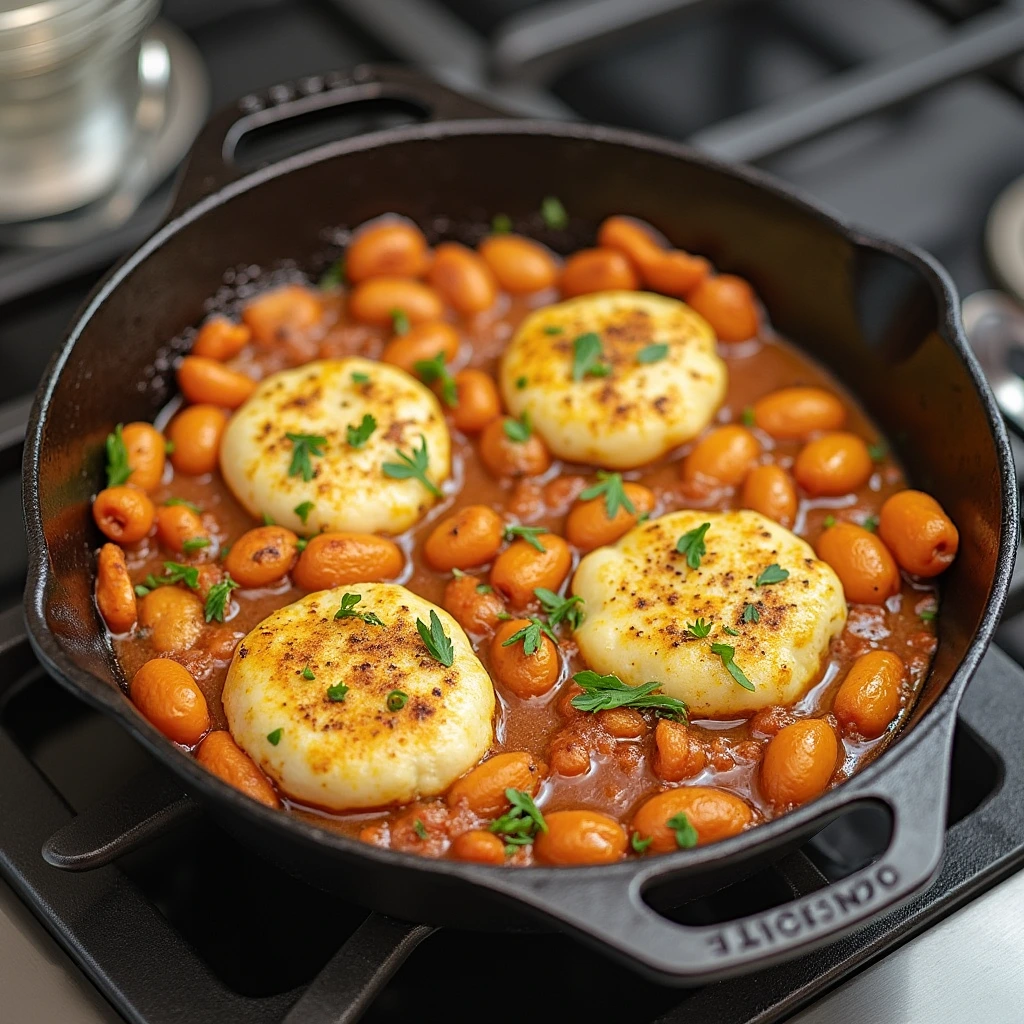Cast iron pans are kitchen workhorses, known for their durability, even heat distribution, and incredible searing capabilities. However, while they excel at cooking steaks, cornbread, and roasted vegetables, some foods can damage the seasoning, cause sticking, or alter flavors.
In this guide, we’ll explore the top foods you should avoid cooking in cast iron pans and provide better alternatives to keep your cookware in top shape.
1. Acidic Foods (Tomatoes, Vinegar, Wine-Based Sauces)
Cooking highly acidic ingredients like tomatoes, citrus, vinegar, and wine-based sauces in cast iron can strip away the protective seasoning and impart a metallic taste to your food.
🔴 Why Avoid It?
- Acids react with the iron, breaking down the non-stick seasoning.
- Can cause a metallic taste in dishes.
- Extended exposure to acidity can lead to rusting over time.
✅ Alternatives:
Use stainless steel or enameled cast iron for dishes that require long simmering times, like a hearty vegetable soup or a tomato-based pasta sauce.
2. Delicate Fish (Tilapia, Flounder, Cod)
While cast iron is excellent for searing robust fish like salmon or tuna, flaky fish like tilapia, flounder, and cod tend to stick and fall apart due to the rough texture of the pan.
🐟 Why Avoid It?
- Delicate fish fillets stick and tear apart easily.
- The intense heat retention of cast iron can overcook fish quickly.
- Fish odors can linger in the pan and affect future meals.
✅ Alternatives:
For light and flaky fish, use a non-stick pan or a well-oiled stainless steel skillet. If you’re craving seafood, try garlic butter shrimp scampi cooked in a pan that won’t stick!
3. Eggs (Especially Scrambled or Omelets)
Unless your cast iron pan is well-seasoned, eggs will stick terribly and create a cleaning nightmare.
🍳 Why Avoid It?
- Eggs stick to unseasoned cast iron, making cleanup difficult.
- Can absorb leftover flavors from previous meals.
- Acidic compounds in eggs can slowly degrade the seasoning.
✅ Alternatives:
Use a non-stick pan for eggs or ensure your cast iron is perfectly seasoned before making fluffy breakfast omelets.
4. Sticky Foods (Cheese, Caramel, and Sugary Sauces)
Sticky ingredients like melted cheese, caramel, or sugary glazes can bond with cast iron, making cleanup a hassle.
🍯 Why Avoid It?
- Sugar burns quickly due to cast iron’s heat retention.
- Sticky residues can ruin seasoning and require aggressive scrubbing.
- Creates uneven hot spots, leading to burnt flavors.
✅ Alternatives:
For recipes requiring melted cheese or sugar, use a stainless steel saucepan instead. If you’re looking for an easy dessert, try creamy peanut butter pie instead!
5. Highly Odorous Foods (Garlic, Onions, Fish, Spices)
Since cast iron is porous, it absorbs flavors and odors from strongly scented foods. This can transfer unwanted flavors to your next dish.
🧄 Why Avoid It?
- Cast iron retains odors, affecting the taste of future meals.
- Garlic, onions, and heavily spiced dishes linger for a long time.
- You don’t want garlicky pancakes the next morning!
✅ Alternatives:
Use stainless steel pans for heavily spiced or aromatic dishes. Instead, try spaghetti with minced beef and bacon in a traditional saucepan.
6. Acidic Marinades (Citrus-Based or Vinegar-Based Marinades)
Marinating meats in citrus, vinegar, or wine-based sauces inside a cast iron pan can cause severe damage.
🍋 Why Avoid It?
- Acid erodes the seasoning, leading to rust formation.
- Leaves a metallic taste in the food.
- Can permanently stain the pan if left too long.
✅ Alternatives:
Marinate meats in glass, stainless steel, or ceramic bowls before transferring to cast iron for cooking. If you’re preparing a citrus-infused dish, try marinated cucumbers, onions, and tomatoes instead.
7. Slow-Simmering Soups & Stews (Especially Tomato-Based)
While cast iron excels at quick cooking, long-simmered soups or stews can erode the seasoning and cause rust.
🥘 Why Avoid It?
- Acidic broths break down the seasoning over time.
- Long cooking times leach iron into food, altering taste.
- Difficult to clean if food sticks or burns.
✅ Alternatives:
Use enameled cast iron (like a Dutch oven) or stainless steel for long-simmered dishes like chicken noodle casserole.
How to Properly Care for Cast Iron
If you want your cast iron pan to last a lifetime, follow these simple care tips:
✅ Season Regularly:
- Apply a thin layer of oil after each use.
- Bake at 400°F (204°C) for one hour to maintain a non-stick surface.
✅ Clean Properly:
- Avoid soap—instead, use hot water and a brush.
- Use salt scrubbing for stubborn residue.
✅ Store Correctly:
- Dry completely after washing.
- Store in a dry place to prevent rust.
Final Thoughts
While cast iron pans are incredibly versatile, knowing what not to cook in them is just as important as knowing what to cook. Avoid acidic foods, delicate fish, sticky ingredients, and slow-simmered stews to keep your pan in top shape.
By following these tips, your cast iron pan will stay seasoned, non-stick, and ready for delicious cooking adventures for years to come! 🍳🔥
💬 Have you ever accidentally ruined your cast iron pan? Share your experiences in the comments! 😊

